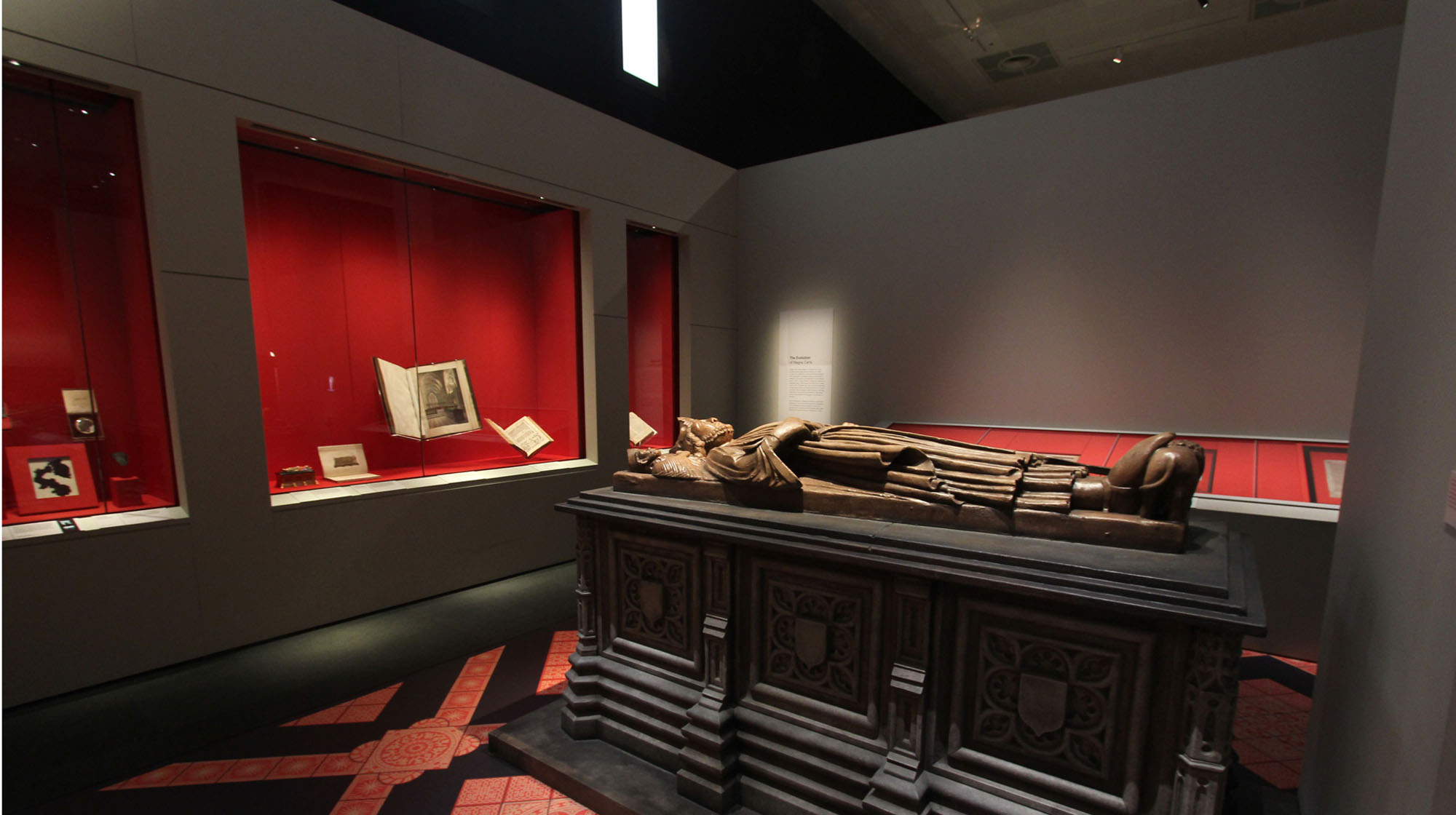







Magna Carta is recognised as one of the world’s most important documents, and in a temporary exhibition commemorating the 800th anniversary of its signing, independent lighting designers Studio ZNA have crafted a spectacular scheme that follows the narrative of the charter, featuring Precision’s award-winning Pico Zoom.
The signing of Magna Carta represents a milestone in the establishment and formal recognition of civil liberties, and has in the eight centuries since the charter’s documentation it has been interpreted as both a practical solution to a temporary political crisis, and contrastingly acclaimed as a foundation of democracy.
The exhibition ‘Magna Carta: Law, Liberty, Legacy”, at London’s renowned British Library, seeks to engage visitors with the historic narrative of the charter, showing how the perception of the document has developed as the wider geo-political context has altered. In addition to two of the surviving copies of the original charter, other artefacts that help to shape the story of Magna Carta include stunning manuscripts, paintings, statues and royal relics.
Further antiquities which Studio ZNA were tasked with lighting as part of the exhibition include Thomas Jefferson’s handwritten copy of the Declaration of Independence and one of the original copies of the US Bill of Rights, both pivotal documents in the history of North America, and evidence of the global impact that Magna Carta has had beyond British shores.
The exhibition marks the first time both of the documents had been presented in the UK, and is testament to the rigour of the exhibition designers, acclaimed architects RFK, in constructing an exhibition narrative that details both the background to the signing of the charter, and the legacy of those who have used – and abused – its power.
Carolina Sterzi, of Studio ZNA, sought to create a lighting scenario that supported the exhibition’s design ambitions of telling the complete story of the charter, and craft an attractive atmosphere for the visitors to experience this once in a lifetime exhibition.
Key challenges in lighting the exhibition included the different ceiling heights, and the different feelings each section had been designed to evoke.
Additionally, due to the age of the exhibits, lighting had to be carefully managed to ensure no risk of degradation to the antiquities presented. As Carolina illustrates: “Delicate and careful focusing work has been carried out to arrange light levels, and comply with appropriate conservation requirements. For light-sensitive objects, luminaires with on-board dimming ability were selected.”
Over 30 Pico Surface spotlights were used to supplement the design of the gallery spaces, with 33° x 15° elliptical optics used to illuminate the labelling of pieces without causing light spill on the floor below. Budgetary constraints led Studio ZNA to utilize as much as the Library’s existing halogen spotlight stock as possible within the scenario, while the addition of Pico and extra linear fittings were selected partly due to being LED sources, with Carolina selecting the luminaires for their low energy consumption and ease of maintenance.
In addition, 20 Pico Zooms provided the exhibition space with extra flexibility. The award-winning variant of the discreet Pico family features tool-less variable team technology, based upon linear slide mechanism. With this innovative technology, Studio ZNA could fine-tune the beam angle from a narrow 12° spot to a broader 30° floor distribution on site.
These acclaimed miniature LED spotlights were put to good use in the exhibition, lighting an imposing statue of Geoffrey de Mandeville that greets the visitors to the exhibition. Baron de Mandeville was a contemporary of King John in 1215, and one of the sureties at the signing of Magna Carta.
James Sherwood Westmacott sculpted the statue, one of a series commissioned by Charles Barry as part of a refurbishment of the Palace of Westminster, and the variable beams of the Pico Zooms draws attention to the scale of the piece, heightening the sense of severity that Barry had instructed from the sculptors.
Pico Zoom has previously illuminated priceless exhibits in lighting schemes by Studio ZNA, and the studio were very familiar with the unique benefits these unique spotlights brought to the museum sector. Having previously specified the luminaire to illuminate the dramatic details of the luxurious gowns featured in a recent Wedding Dresses exhibition at the V&A Museum; the studio welcomed the simple on-site adjustment ability of the spotlights to suit the needs of future exhibitions without the need for new fixtures.
Such versatility from Pico Zoom is welcomed particularly in temporary gallery spaces, where specifiers can use the linear sliding mechanism to fine-tune the lighting of subjects after they have been installed, perfect when the precise dimensions of objects to be exhibited have yet to be confirmed before onsite commissioning.
For the dramatic last section of the exhibition, where two of four surviving 1215 original copies of Magna Carta were to be presented, Studio ZNA faced a very specific challenge. “The space itself is a simple dark room, with large, thick sheets of glass protecting the two documents, and the danger of reflections spoiling the view of these irreplaceable documents is high,” Carolina explained.
Pico’s small form-factor enabled the luminaire to be cunningly installed in the underlying structure; and careful cross focusing of the spotlights overcame this risk of reflection. The Zoom variant was chosen for lighting the surviving copies of the charter, as it gave Caroline more flexibility to tweak the beam angle for highlighting the documents without missing any of the fine details.
Carolina concludes: “Having hidden the source of light and removed all unnecessary reflections, the two copies managed to emerge from the darkness of the room with stark clarity, leaving the visitor to experience a unique moment in the course of human history.”
The effect is stunning, with the contrast between the extremely low ambience and the beautifully lit charters, the room evokes a sense on contemplation on the role that the charter has, and its continued legacy.
Project Name: Magna Carta – British Library
Location: London
Share